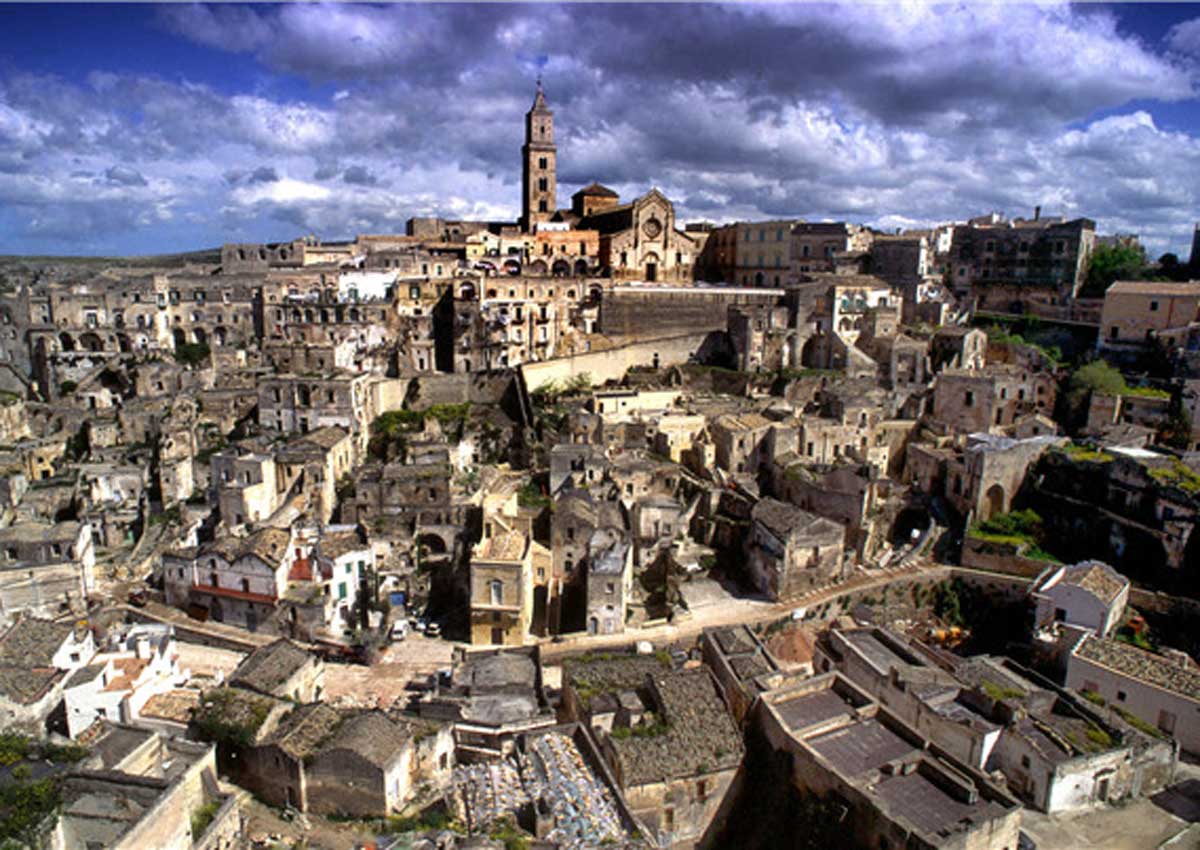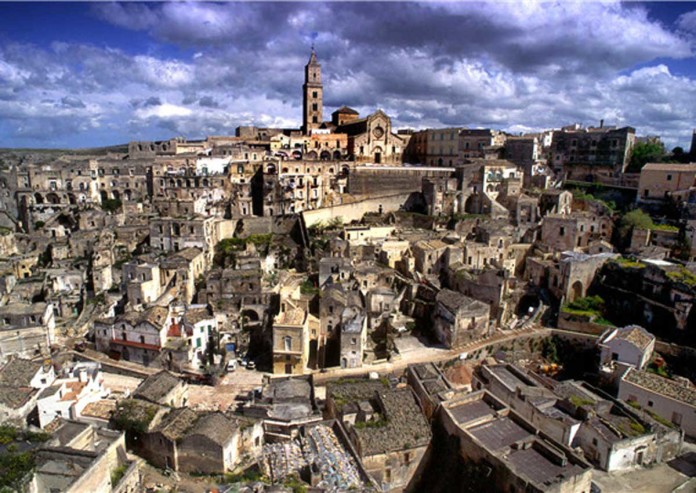Protecting and preserving cultural relics has been an important task for China, especially in recent years as conflicts between conserving of historical relics and the growing economy stand out in the fast process of the nation’s urbanization.
On Tuesday, President Xi Jinping stressed in a national meeting that the conservation of relics is part of the official duties of the CPC and all government departments.
President Xi suggested that private sectors should be mobilized and involved in the effort.
Despite the efforts of protecting them, China’s cultural relics were not taken care of at its best. Frescoes in Fenghuangshan scenic spot in Northeast China’s Liaoning province, for example, was damaged at large after restoration. Sustainable development, though being laid as an important issue by the central government, still lacks concrete and convincing examples of progress.
Given such dilemma, we’ve invited Pietro Laureano, an Italian architect and urban planner to share with us his experience in conserving cultural relics.
As a UNESCO consultant on arid areas, water management and endangered ecosystems, Laureano once spent ten years restoring the historic city of Matera in Italy.
He helped turn the once abandoned ruins of Matera into a sustainable city. Matera was also chosen as the 2019 European Capital of Culture.
In an exclusive interview with China Daily Website, Laureano also gave advice on how China could achieve sustainable development in terms of conserving its many cultural relics.
What was Matera like ten years ago? Why were people moving away from Matera?
Matera, in the South Italy, is a primordial dwelling settlement based on cave-houses that were carved in the stones and therefore called the “Sassi” (rocks).
In the 1950s this way of living was considered inacceptable modern living. The Sassis of Matera was declared a national shame and 20,000 inhabitants were forced to move to new quarters.
The abandoned houses became State property and were boarded up in order to prevent people from living in caves.
Consequently, the Sassi of Matera became a desert town; the largest historic centre of Europe that was completely abandoned. The dwellings not inhabited and aired underwent a rapid degradation process as well as the rock-hewn churches which boasted beautiful medieval frescoes.
Since when did Matera start being valued and preserved? And what measures have been taken to make this work?
It started after the mass migration of the inhabitants of the rock dwelling city of Sassi di Matera. In the 1980s, there was an emergence to preserve it, but no one seemed to see how.
Some wanted to leave the site as it was, abandoned, which would have been a testimony of what had happened in the past. Others proposed to make the dwellings inhabitable again with a bold effort to reclamation by rehabilitating all necessary transformations.
In the first option, the Sassi of Matera would have remained deserted. Essentially it would have been a museum city, impossible to preserve. In the second option, the reclamation would have involved demolition and reconstruction. The solution would have only been achieved if the inhabitants returned after the necessary restorations compatible with the preservation of its character.
Finally, we used the UNESCO principles. The landscape is build by the people; it is a balance of nature and culture. It is movement and change. It is not possible to keep the landscape as a museum.
But it is necessary to propose those changes in harmony with the historical evolutionary process.
When did people start moving back to Matera? Why are they moving back, are there any incentives? People started moving back after the inscription of Matera as a UNESCO World Heritage Site in 1993.
It was the first such site in southern Italy. By stimulating the will and the pride of the community, Matera, as cultural and economic endeavour, generated a new vision.
It was necessary to give people examples. When I did the UNESCO candidature project, I restored a grotto-house and I lived in the caves with my family.
We inserted all modern facilities in the cave-house without to altering its original elements.
As an incentive, the state paid 50 per cent on restoration expenses. With the new image, the tourism and the increase of in value for habitation, more and more people returned.
Now, who lives in Matera? How do they balance the ecosystem with their daily lives?
The residents are intellectual working class people. There are many foreigners living in Matera.
They identify with the qualities and the meanings of those places.
They (Matera residents) became part of the brilliant Matera ecosystem by saving water and energy, recreating the community, choosing a calm lifestyle, a green lifestyle, and a healthy lifestyle.
They use traditional technologies in an innovative way.
For example: rehabilitating the cisterns to harvest rainfall water; using that water to restore terrace gardens.
What’s Matera’s current status in Italy?
Matera has become a national and international tourist attraction. At present, 4,000 people have come back to the city. Other houses are undergoing restoration work. It is the most important example of urban rehabilitation in the Mediterranean.
Matera won the candidacy, against the most important and beautiful cities of Italy, for being the European Capital of Culture for 2019. This crowns a success that started with the UNESCO inscription and the new vision and narrative developed for the candidature.
Are there any universal practices that China can borrow from Matera’s experience? Could you give us some examples?
China has so many well restored extraordinary places.
Take Lijang in Yunnan province and Luohe in Henan province as examples. But sometimes the rebuilding activities are too heavy like some ancient quarters of Beijing. Each situation is different.
But when it is possible, it is better to keep the authentic fabric and to restore instead of rebuilding.
In other situations, preserve the landscape is necessary to assure an economic return to the habitant (like the wonderful landscape of the terraced fields of Honghe in Yunnan).
But if we increase the agriculture production with industrialisation we risk destroying the place.
The solution in Italy has been to increase the value of typical products while exalting the variety and quality of the original character, turning it into a heritage place.
The typical food production safeguards are possible thanks to the maintenance of traditional techniques in soil management.
The most refined production houses are proud to list the traditional techniques they use in their manufacturing methods and the success of so many companies are actually due to the capacity to incorporate tradition into their processes.
You’ve travelled to quite a few places in China, are there any specific places that interest you? Do you think they could be better preserved? If so, how?
The Chinese people’s historical knowledge allowed architectures to build quality structures and landscapes with a universal value which many of them are now inscribed on the UNESCO World Heritage list.
However, traditional knowledge is in danger and its disappearance would cause the loss of the people’s capability to keep and pass on the artistic and natural heritage.
With the abandoned villages and mountains, some places have lost their ability to absorb water and mitigate climate. Landslides and flooding are becoming more frequent.
A new environmental and urban design based on blue and natural engineering is necessary. We need to inventory, protect, and reuse traditional knowledge as an extraordinary source so that appropriate innovative solutions can be derived today and in the future.
Using traditional knowledge does not mean reapplying the techniques of the past,.
It means to understand the logic of this model to create projects based on innovative sound technologies.
The Matera UNESCO experience was a methodology of inventory that was elaborated by IPOGEA and the International Traditional Knowledge Institute (ITKI) to gather and protect historical knowledge and promote innovative practices.
In your opinion, what is sustainable development and how can one achieve sustainable development?
Development is sustainable when the natural resources are not destroyed.
Development is sustainable when it is oriented towards the wellbeing of the people and future generations.
The climatic change and the economical situation demonstrated errors in the system.
We cannot face the global crises of applying the methods that caused it: technocracy, waste of resources, undifferentiated approach for all countries, top-down approach.
A new paradigm is required and scholars, researcher, international bodies, administrators, local activists and associations put forward various strategies: sustainable development; the green economy; a third industrial revolution based on alternative energy sources; zero emissions; zero km; the slow-economy; design for poverty; ecosystems harmonic management theories.
These are all points of interest today.
We propose traditional knowledge, use its innovative underlining wisdom, and be engaged everywhere in the comprehension of the pattern of signs. We need recovery the relation between nature and culture.






